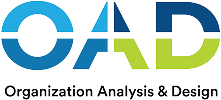The hiring landscape has changed—but many recruitment and selection processes haven’t. Companies still rely on gut instincts, outdated job ads, and resume filters that miss the mark. The result? Misaligned hires, wasted time, and a talent pipeline that’s more luck than strategy.
Table of Contents
- Step 1: Start With a Strategic Job Analysis in the Recruitment and Selection Process
- Step 2: Write Job Descriptions That Attract the Right Candidates
- Step 3: Design an Application Process That Delights Candidates
- Step 4: Build a Strong Employer Brand to Stand Out
- Step 5: Use Job Boards and Company Websites Strategically
- Step 6: Resume Screening Without the Overwhelm
- Step 7: Engage Passive and External Candidates With a Targeted Strategy
- Step 8: Prioritize Behavioral Interviews Over Surface-Level Chats
- Step 9: Involve the Right People in Interview Scheduling and Decision-Making
- Step 10: Skill & Personality Assessments That Predict Performance
- Step 11: Make Better Offers, Faster
- Step 12: Improve Your Onboarding Process From Day One
- Step 13: Build a Referral Engine With Your Employees
- Step 14: Review and Refine Your Recruitment Metrics
- Ready to Find the Right Candidate Faster?
Step 1: Start With a Strategic Job Analysis in the Recruitment and Selection Process
Before you post a job or screen a single resume, you need clarity. Job analysis is the foundation of an effective recruitment and selection process—and skipping it leads to confusion, unqualified candidates, and mismatched expectations.
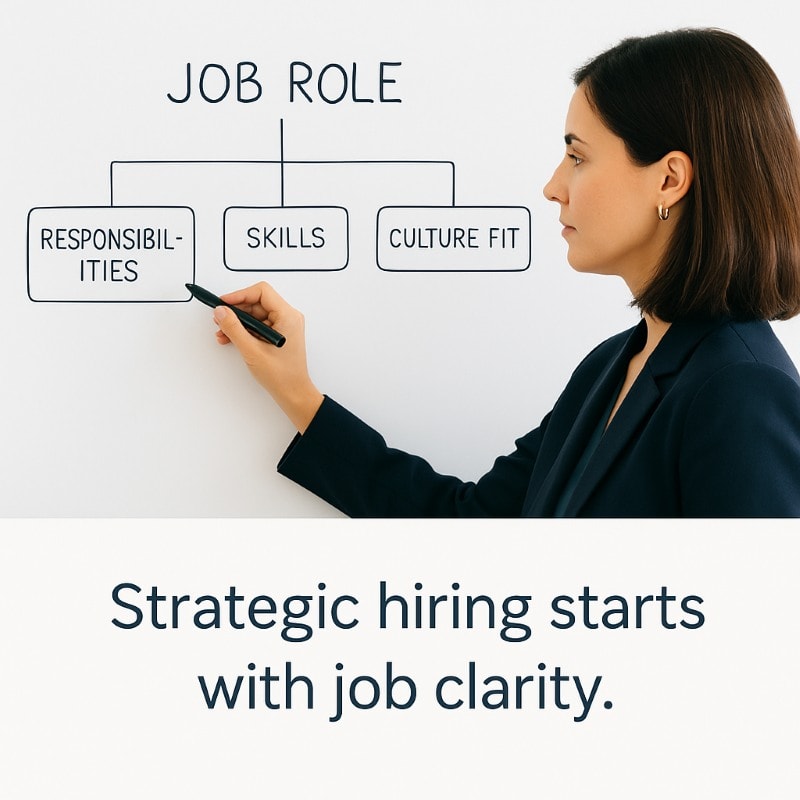
Job analysis involves breaking down a role into its core responsibilities, required competencies, personality traits, and long-term goals. This goes beyond a list of tasks—it’s about understanding how the role fits into your business strategy.
The more specific the analysis, the more effective your job description will be. For example, instead of listing “strong communication skills,” define what communication success looks like in your environment—presenting to stakeholders? Handling client conflict? Cross-functional collaboration?
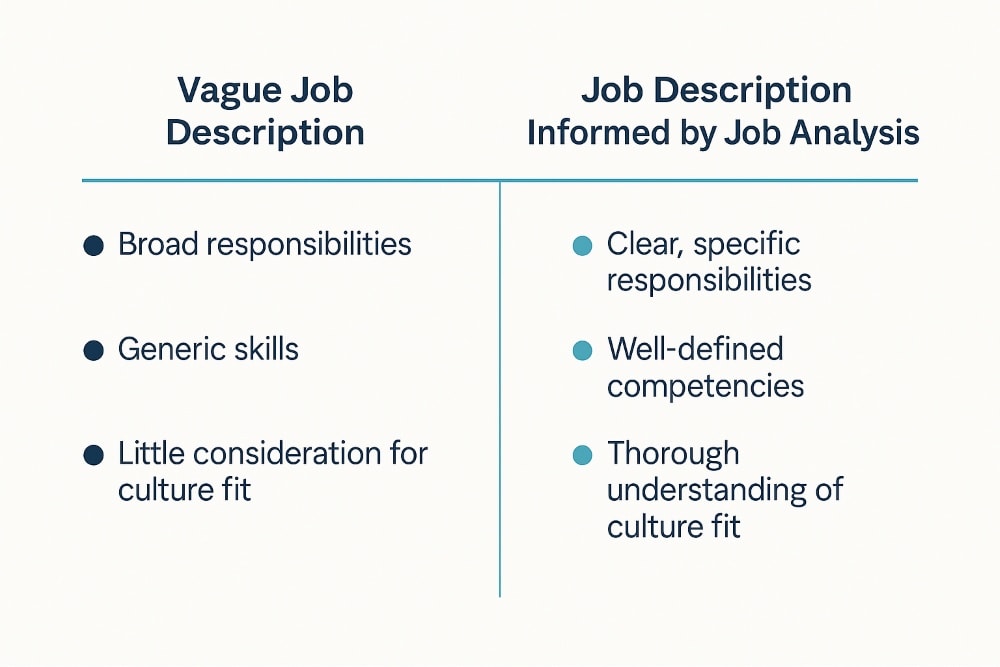
Job specifications developed from analysis also help reduce unconscious bias. Rather than “hiring the person who feels right,” you’re hiring the person whose profile matches the behavioral and performance needs of the role.
Step 2: Write Job Descriptions That Attract the Right Candidates
A job description isn’t just a checklist—it’s a signal to the market. The strongest candidates skim hundreds of job ads. If yours looks like every other post on a job board, you’ll miss out on the best talent.

Generic descriptions focus on duties. Great ones highlight growth, impact, and culture. If you’re hiring for a marketing manager, don’t just say “create campaigns”—say how those campaigns will shape the brand, contribute to revenue, or lead cross-functional teams.
The right job ad also filters out unqualified candidates. If you clearly define what success looks like in the first 90 days or outline personality traits needed for the role, applicants can self-select before they even hit apply.
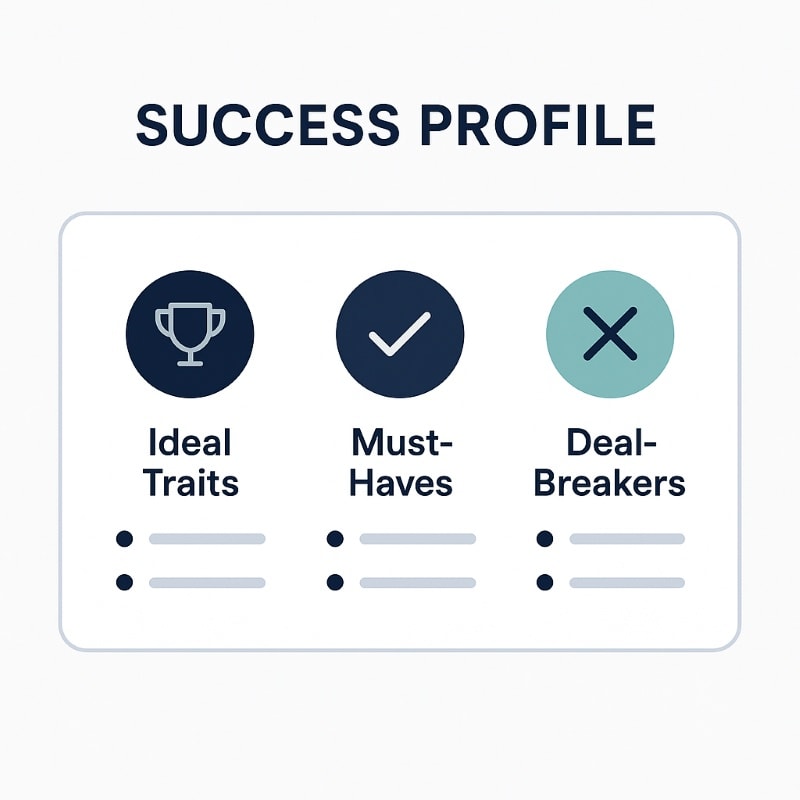
When you create a Success Profile with columns for traits, must-haves, and deal-breakers, you clarify exactly what makes someone the ideal candidate for the position. This helps ensure your hiring process is focused on finding the ideal candidate whose qualities align with your company’s needs.
Use plain, inclusive language—and stay away from buzzwords that mean nothing in practice. Every line should help you attract the right person and repel the wrong one.
Step 3: Design an Application Process That Delights Candidates
A seamless application process is a crucial aspect of any strong recruitment process. It’s your first real interaction with potential candidates—and it sets the tone for their entire candidate experience. If the process is complicated or unclear, even the best candidates may drop out before you ever see their resume.
Start by ensuring your job description is clear, concise, and accurately reflects the job requirements and responsibilities. This not only attracts qualified candidates but also helps filter out unqualified applicants before they even begin the application process. Post your job openings on your company’s career site, relevant job boards, and social media platforms to reach as many candidates as possible—including top talent who may not be actively searching but are open to the right opportunity.
Simplicity is key. Use an applicant tracking system (ATS) to streamline the application process, allowing candidates to easily upload their resumes, cover letters, and complete a brief, focused application form. The right ATS can help hiring managers and recruitment teams efficiently screen and shortlist promising candidates, making the hiring process faster and more effective.
To further refine your selection process, consider integrating personality traits assessments and psychometric tests early on. These tools help identify the most suitable candidates by evaluating not just skills, but also the qualities that predict long-term success in your organization. This reduces the risk of hiring the wrong candidate and ensures you’re moving the best candidates forward.
Don’t forget to test your application process from the candidate’s perspective. Invite a small group to apply and provide feedback—are there any confusing steps, unnecessary questions, or technical glitches? Use their insights to make improvements, ensuring the process is as smooth and welcoming as possible.
Step 4: Build a Strong Employer Brand to Stand Out
Top candidates don’t just evaluate the job—they evaluate your brand. A strong employer brand attracts qualified candidates before you even post a job opening. A weak one? It sends top talent to your competitors.
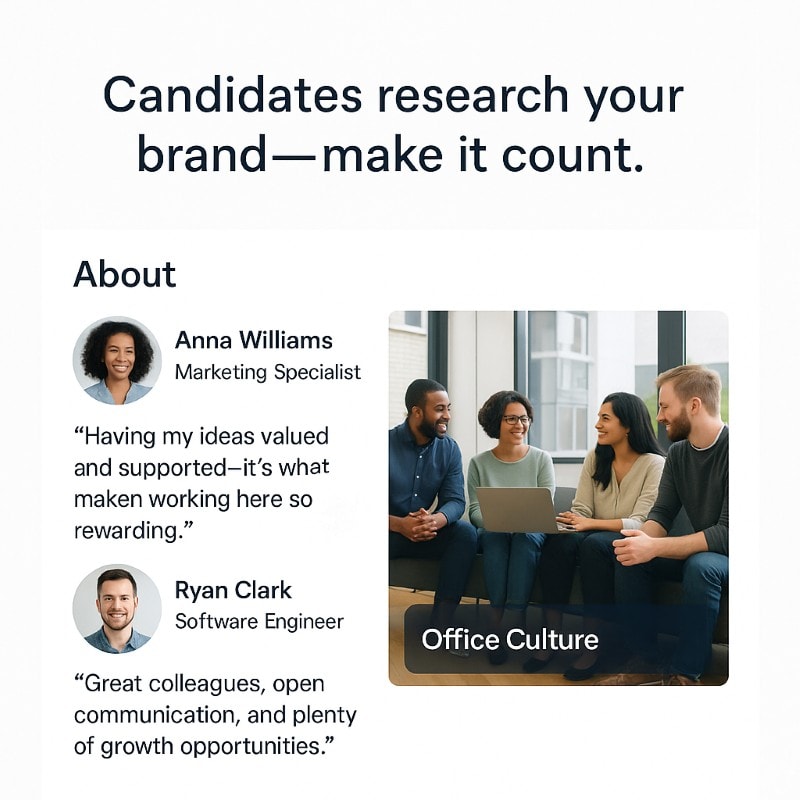
Your career site, social media presence, and employee reviews all shape how potential candidates perceive your company. And in competitive industries, perception is everything.
Highlight what makes your organization different. Showcase stories of growth, values in action, and employee achievements. If you’re remote-first, talk about flexibility. If you promote from within, show the career paths.
Social media platforms aren’t just for marketing—they’re recruitment tools. Use them to humanize your brand, show your people, and attract candidates who align with your mission and culture.

Step 5: Use Job Boards and Company Websites Strategically
Posting a job isn’t enough. Where—and how—you post determines who sees it. To reach the best candidates, you need a deliberate distribution strategy, not a “spray and pray” approach. Well-crafted job postings are essential for reaching the right audience and attracting diverse, qualified applicants.

Different platforms serve different audiences. Niche job boards can surface high-quality, specialized talent. Generalist boards help cast a wider net. Companies use these various channels to find candidates efficiently and fill open positions faster. And your own career site? It’s where serious candidates go to validate your brand.
The best-performing job ads are often optimized for mobile, backed by strong employer branding, and clear on salary or role expectations. Transparency improves conversion—and filters out mismatched applicants early.
And don’t overlook SEO. Use keywords in your job title and description that match how your ideal candidates search. This increases visibility on job boards, aggregators, and even Google Jobs. These optimization strategies are key to an effective recruitment process, helping attract qualified applicants and improve hiring outcomes.
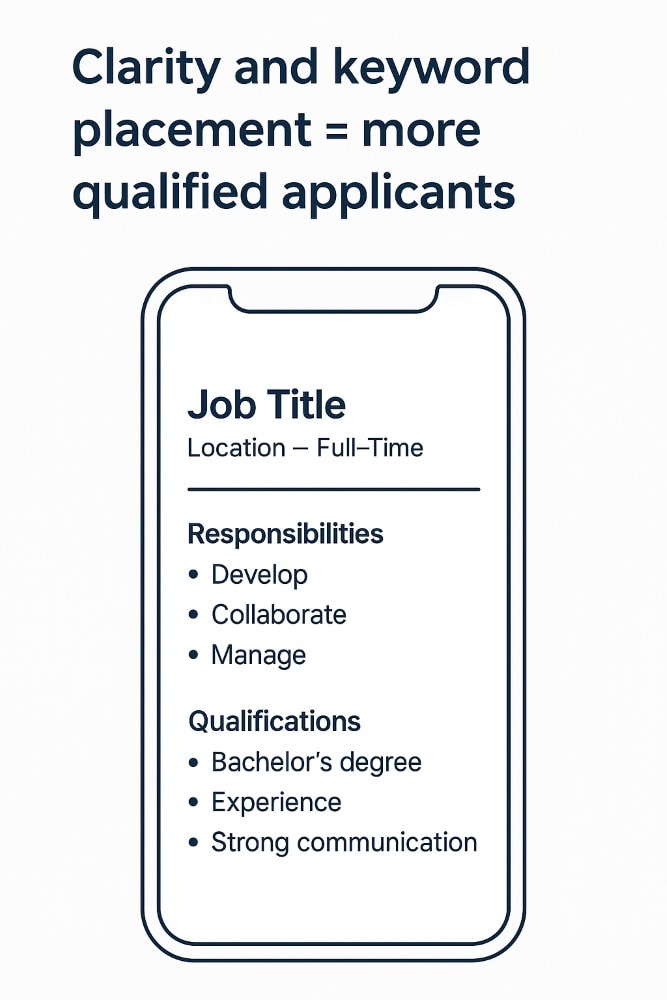
Step 6: Resume Screening Without the Overwhelm
Resume screening is one of the most time-consuming—and error-prone—stages in the recruitment and selection process. Resume screening involves evaluating qualifications, skills, and experience to identify suitable candidates. When done manually, it often leads to overlooked talent and wasted hours.
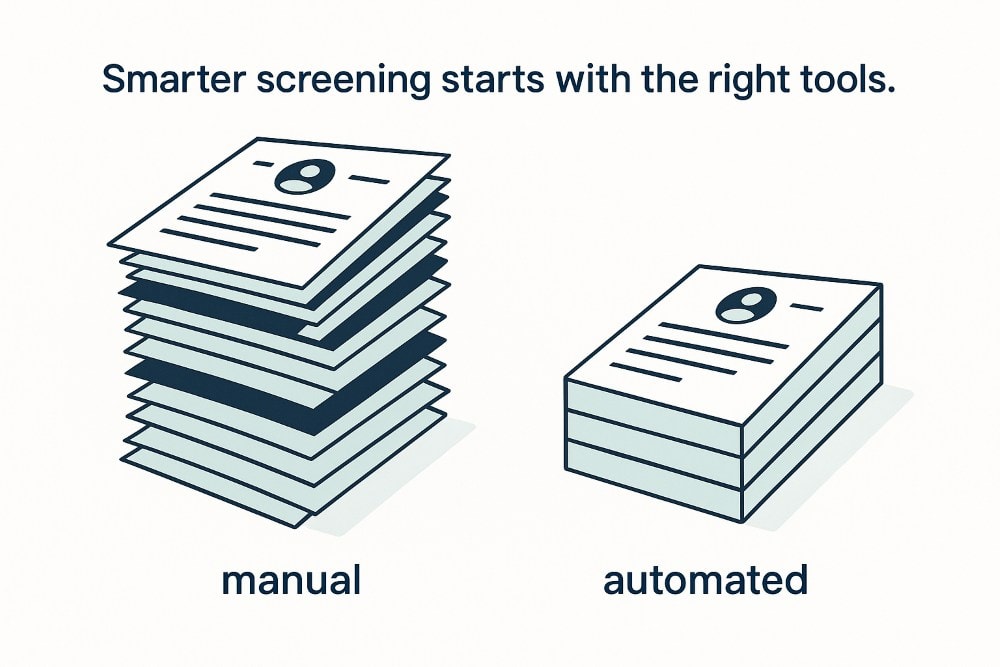
Automated screening tools can scan resumes for relevant keywords, skills, the candidate’s education, and even indicators of personality traits. These systems not only accelerate hiring but help eliminate unconscious bias that often sneaks into early filtering.
But automation alone isn’t enough. You need to align screening criteria with job analysis and behavioral benchmarks. That’s where science-backed tools like OAD’s assessments stand out—they help identify candidates who match the role beyond surface-level qualifications.
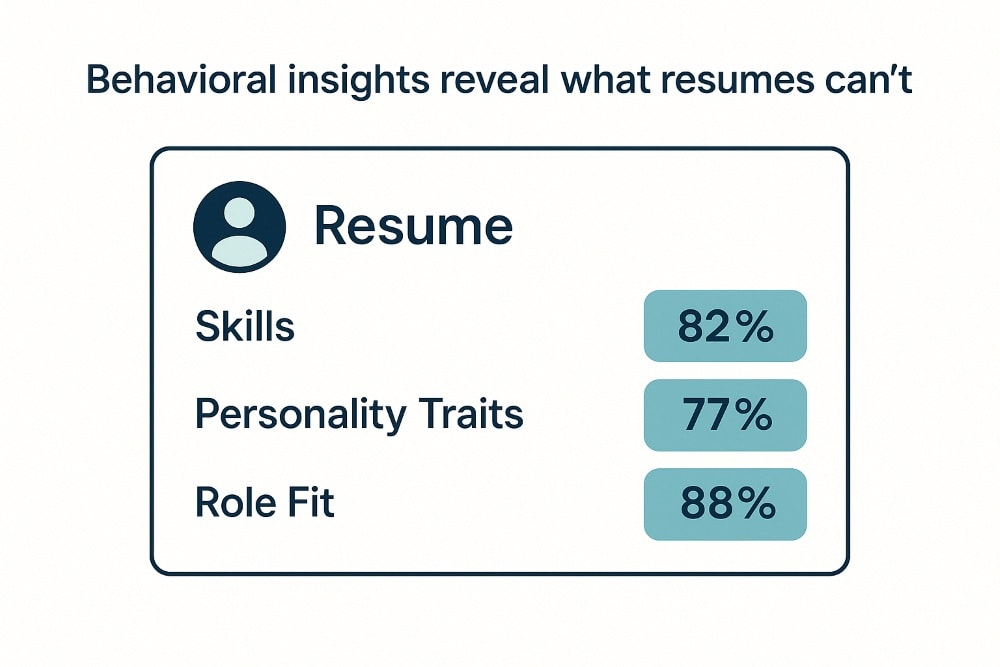
The goal isn’t just to reduce volume—it’s to find the most qualified candidates faster, with more confidence.
Step 7: Engage Passive and External Candidates With a Targeted Strategy
Some of the best hires aren’t job hunting. Passive candidates—those currently employed and not actively applying—often bring experience, reliability, and long-term fit. But they won’t come to you. You have to go to them.

Tools like LinkedIn Talent Insights, GitHub (for tech), or niche communities can reveal potential candidates who meet your job specifications. But outreach is just the beginning—how you approach them matters just as much.
Instead of cold-pitching a job, start by building a relationship. Share relevant content, comment on their work, or invite them to a low-pressure conversation. The recruitment team plays a crucial role in engaging passive candidates by personalizing communication and ensuring a positive candidate experience. When the time’s right, they’ll be more open to your offer.
External candidates—including referrals from outside your organization—also expand your reach. Partnering with trusted recruitment agencies or alumni networks can surface talent you’d otherwise miss. Incorporating talent acquisition strategies helps source high-quality candidates and strengthens your overall recruitment process.

Step 8: Prioritize Behavioral Interviews Over Surface-Level Chats
Most interviews sound impressive on paper—but in practice, they often rely on instinct, small talk, or “gut feelings.” That’s how companies hire candidates who look good, but don’t last. Conducting interviews as a critical step in evaluating candidates ensures a more objective and effective selection process.

Behavioral interviews are rooted in psychology. They ask candidates to describe how they handled past situations, revealing patterns in decision-making, problem-solving, and emotional intelligence. The interview stage is a key point for assessing candidate fit, especially when using structured questions to evaluate both skills and cultural alignment.
Instead of asking, “How would you handle conflict on a team?”, you’d ask, “Tell me about a time you resolved a conflict with a colleague—what was your approach, and what was the result?”
This method reveals more than just skills—it exposes values, mindset, and likely behaviors in future situations. It helps you identify the most suitable candidates for both the role and your culture.
To scale this approach, create a consistent question bank mapped to each job role and benchmark responses based on past top performers. OAD’s behavioral frameworks make this even easier by aligning interview questions to scientifically validated traits.
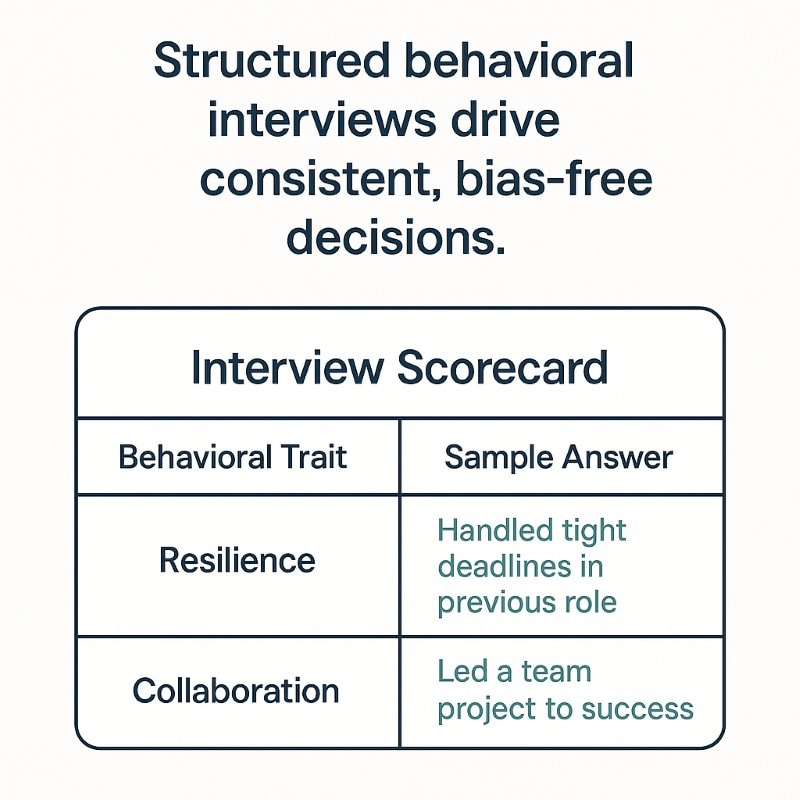
Step 9: Involve the Right People in Interview Scheduling and Decision-Making
Hiring shouldn’t be a solo mission. Involving the right people in the interview process helps you catch blind spots, reduce bias, and make more confident hiring decisions.
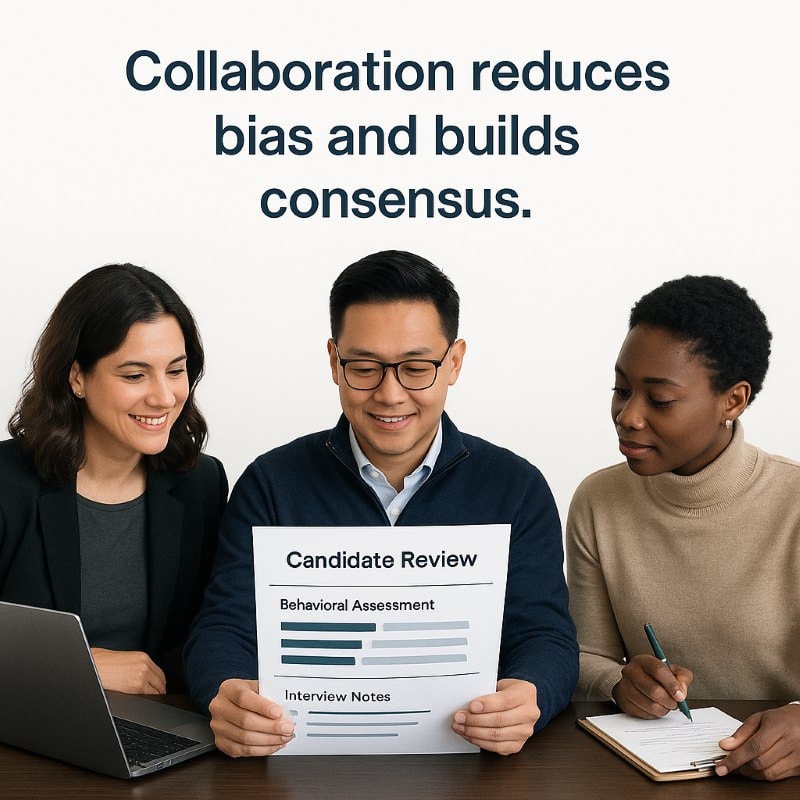
Hiring managers bring firsthand knowledge of the role. The hiring manager makes the final decision on candidate selection, often in collaboration with other stakeholders to ensure the best fit. HR professionals provide structure, consistency, and compliance, ensuring the recruitment process is both effective and follows best practices. And peer team members can evaluate culture fit and day-to-day dynamics.
But without clear roles, interviews can become redundant—or worse, contradictory. That’s why structured interview scheduling and shared evaluation frameworks are essential.
Each stakeholder should focus on a specific aspect of the candidate—skills, communication, adaptability, leadership style—and score them against a shared rubric. This creates a balanced view and avoids the classic “we just liked them” trap.
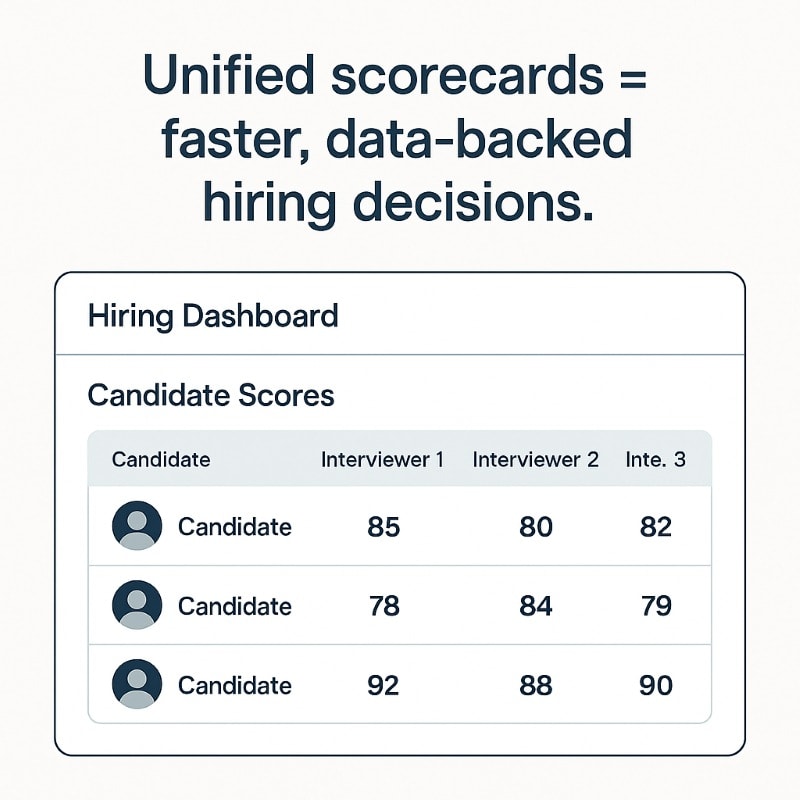
The result? Faster alignment, better candidate experiences, and more strategic hires.
Step 10: Skill & Personality Assessments That Predict Performance
Resumes tell you what a candidate has done. Assessments show you what they can do—and how they’ll behave once they’re in the role.
Skill assessments simulate real job tasks. Whether it’s a coding challenge, writing sample, or problem-solving scenario, these tests let you see candidates in action before extending an offer. These tools are especially valuable for determining the suitability of one candidate over another by providing objective data for comparison.
But skills alone aren’t enough. That’s where personality and behavioral assessments come in. Tools like OAD’s scientifically validated surveys measure traits like resilience, adaptability, and communication style—all of which impact long-term success.
These assessments don’t just help you find the most qualified candidates—they help you avoid bad hires by revealing mismatches early. They also support fairer, data-driven hiring by reducing overreliance on resume “gut checks.” Incorporating assessments into your process leads to solid recruitment by reducing hiring risks and ensuring you select the best fit for your team.
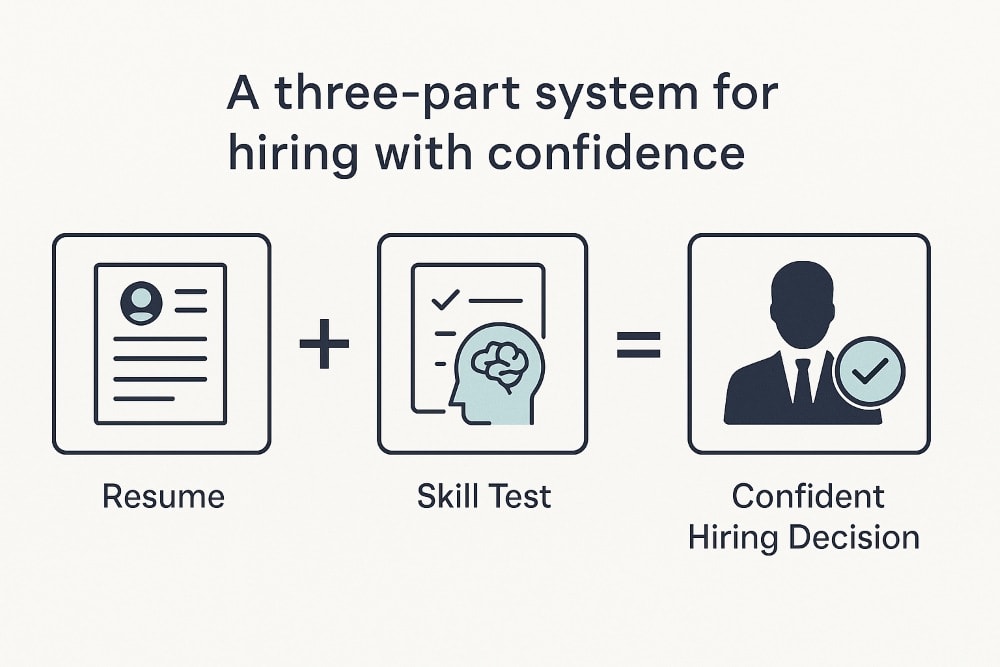
Step 11: Make Better Offers, Faster
The most qualified candidates aren’t on the market for long. Delayed offers or generic packages can cost you your top pick—and send them straight to a competitor. Making the job offer is the final step in the recruitment and selection process, marking the transition from candidate evaluation to formal employment.
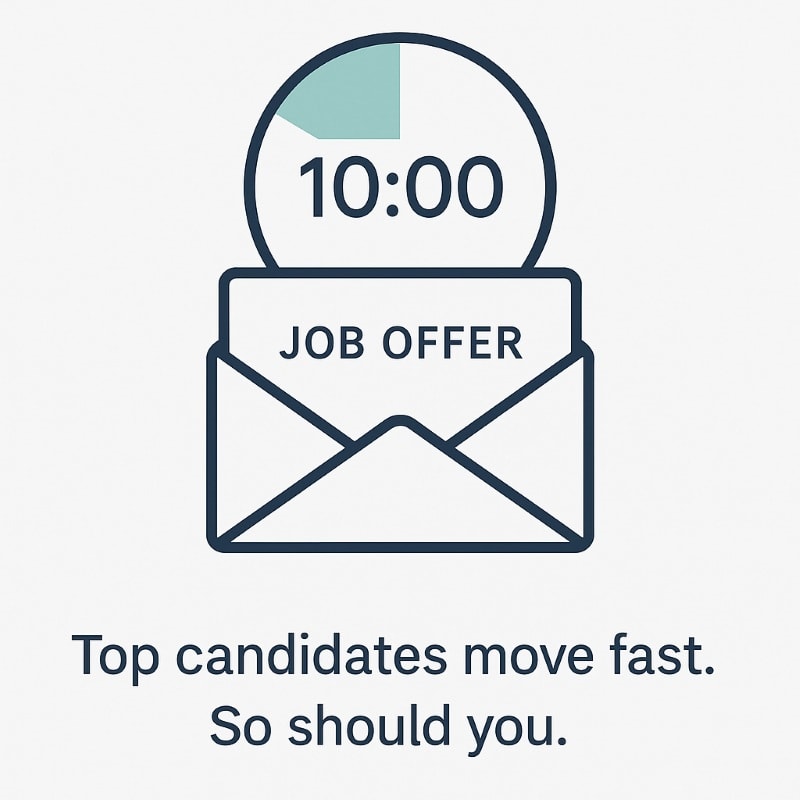
Speed matters, but personalization seals the deal. Your offer should reflect not just compensation, but alignment with the candidate’s values, career goals, and lifestyle. That includes flexibility, growth opportunities, team dynamics, and leadership style.
Behavioral insights from assessments can help tailor your offer. For example, a high-autonomy candidate might value decision-making power more than a bigger title. A candidate driven by structure might prefer clear promotion timelines. After careful evaluation, extend the offer to the chosen candidate, ensuring your decision is based on a thorough assessment process. The offer should be designed to secure the best candidate for the role by addressing their unique motivations and needs.
When offers reflect what candidates actually care about, acceptance rates improve—and retention often follows. It is crucial to ensure the candidate accepts the offer before moving forward with onboarding and next steps.
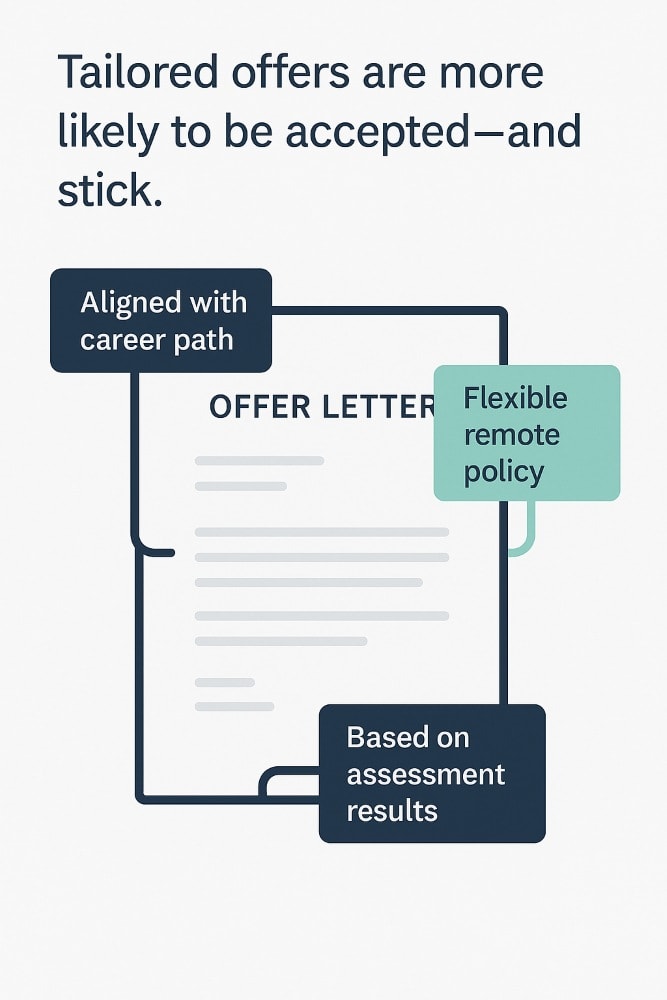
At the final stage, confirm acceptance and prepare for onboarding to complete the recruitment process.
Step 12: Improve Your Onboarding Process From Day One
Your recruitment and selection process doesn’t end when the offer is accepted—it ends when the new hire is fully integrated and productive. Onboarding begins after a contractual relationship is established between the employer and the new hire. That’s where onboarding makes or breaks success.
Effective onboarding accelerates learning, strengthens engagement, and reduces early turnover. SHRM reports that 69% of employees are more likely to stay with a company for three years if they experience great onboarding.
Before onboarding starts, completing background checks is a standard procedure to verify candidate information and ensure legal compliance, especially for roles with sensitive responsibilities.
This is also where behavioral assessments add value. Managers can use OAD insights to tailor early communication, goal-setting, and team integration based on the new hire’s personality profile.
Think beyond paperwork. Introduce meaningful touchpoints: one-on-one meetings, culture overviews, mentorship connections, and milestone check-ins. When onboarding is intentional, new employees contribute faster—and stay longer.
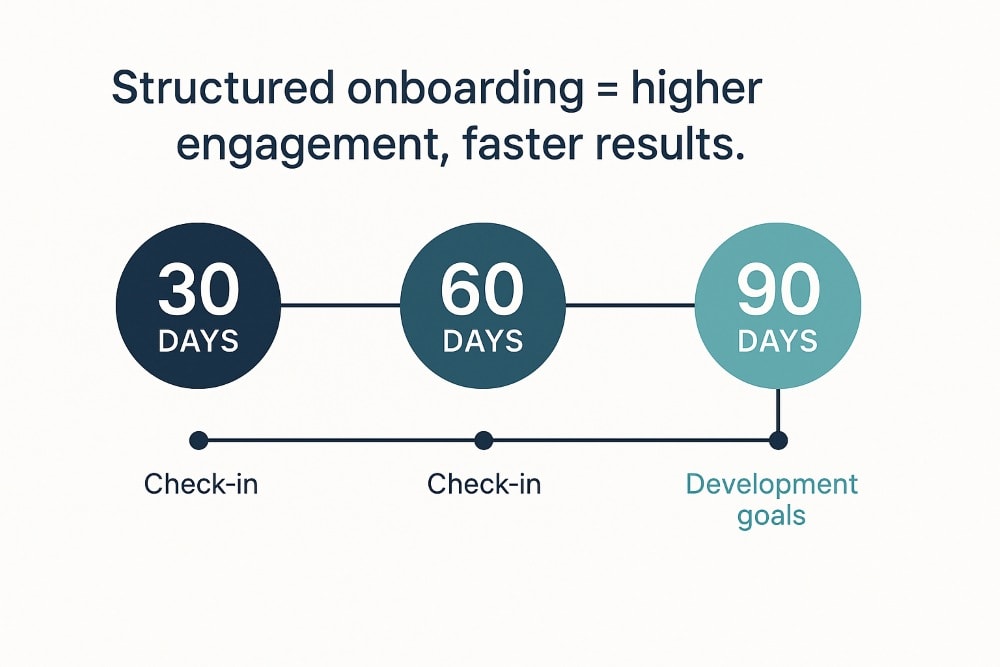
Step 13: Build a Referral Engine With Your Employees
Your employees know your culture better than anyone. That makes them your most powerful—and often underutilized—recruitment tool. Employee referrals are a key source of qualified candidates, as current employees can recommend people who are likely to be a strong fit.
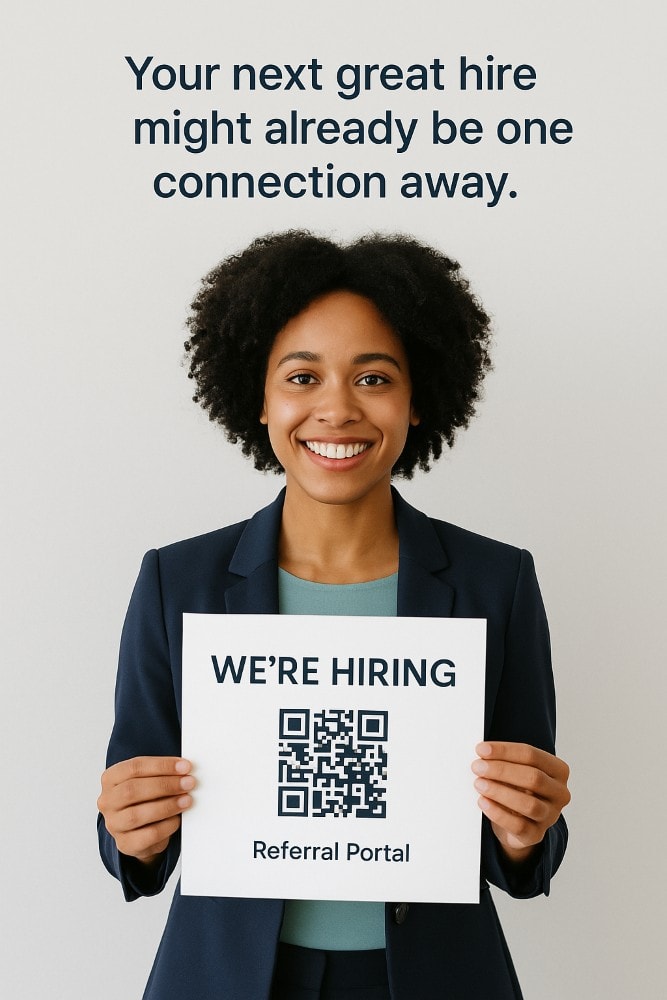
Referral hires tend to onboard faster, perform better, and stay longer. According to Jobvite, referral candidates are 55% faster to hire than those sourced through career sites—and they generate 25% more profit for companies.
But strong referrals don’t happen by accident. You need a structured program that rewards thoughtful recommendations—not just mass forwarding of job links.
Offer tiered incentives, recognize top referrers, and make it easy for employees to share open positions with their networks. Most importantly, show them what kind of candidate you’re actually looking for.

Step 14: Review and Refine Your Recruitment Metrics
A strong recruitment and selection process isn’t static—it evolves. If you’re not tracking results, you’re not improving. And if you’re not improving, you’re falling behind. Human resource management plays a crucial role in monitoring and optimizing recruitment metrics to ensure continuous improvement.

Start with baseline metrics: time-to-fill, offer acceptance rate, quality-of-hire, and first-year retention. Then layer in more strategic indicators like candidate experience scores or performance benchmarks of new hires. Tracking quality-of-hire and retention helps organizations avoid the costly consequences of a bad hire, which can negatively impact both finances and company growth.
But don’t just track—adjust. If certain job boards yield unqualified candidates, reallocate budget. If behavioral interviews predict long-term success better than skills tests, double down on that format.
Science-backed tools like OAD help uncover patterns by linking behavioral data with on-the-job outcomes. Over time, you’ll know not just who performs—but why.

Ready to Find the Right Candidate Faster?
The recruitment and selection process isn’t just about filling open positions—it’s about shaping your future workforce. Companies that treat hiring as a strategic function gain a serious edge in performance, retention, and culture.
And while gut instinct has its place, the most effective recruitment teams rely on behavioral data, structured systems, and science-backed tools to make hiring decisions with confidence.
If you’re ready to elevate your hiring strategy—
→ Try it for free today.
See how our validated assessments help you match candidates to roles based on behavior, culture fit, and long-term potential—not just resumes.
